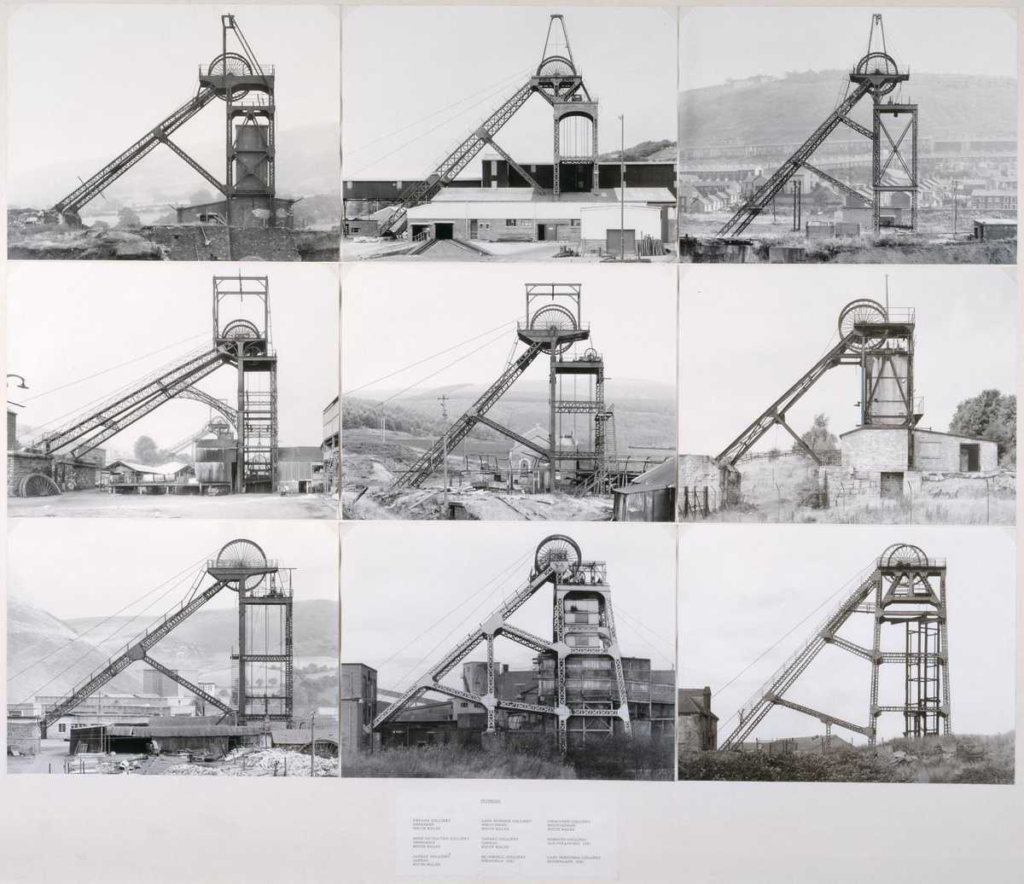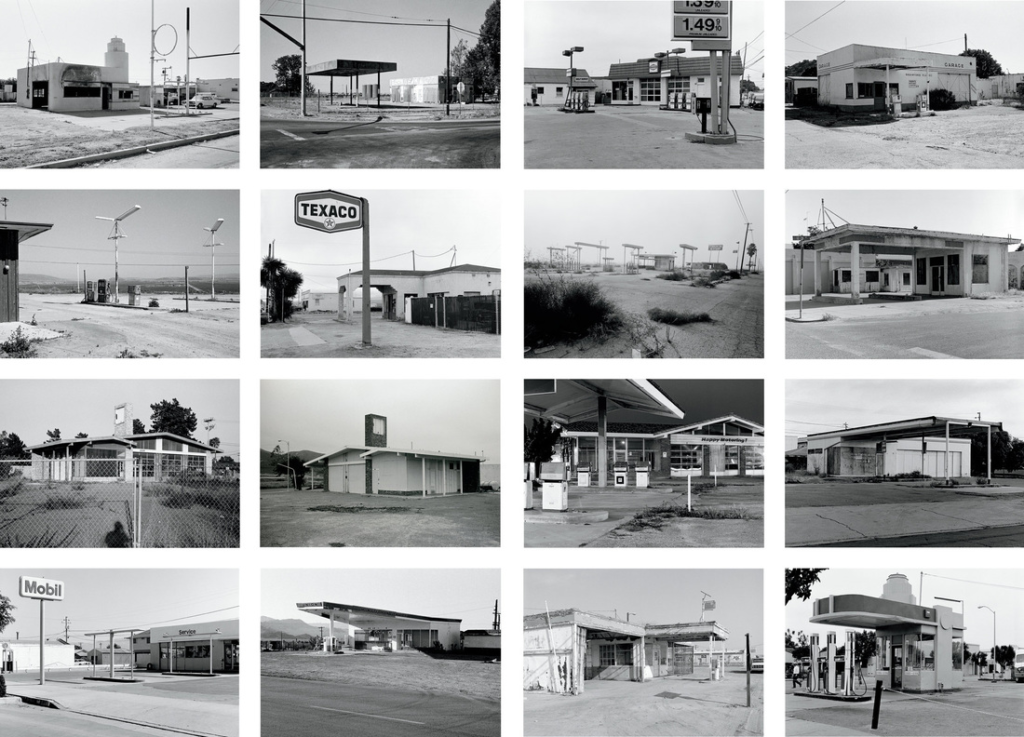The term ‘Typology’ was first used to describe a style of photography when Bernd and Hilla Becher began documenting dilapidated German industrial architecture in 1959. The couple described their subjects as ‘buildings where anonymity is accepted to be the style’.
They have produced a number of photographs of the items being photographed slightly similar and of the same function but in different places, these photographs when placed next to each other, in a grid like pattern, they would look very similar as they would be taken from the same angle, at approximately the same distance from the buildings.

Their aim was to capture a record of a landscape they saw changing and disappearing before their eyes so once again, They challenged the viewer to consider a subject’s place in the world and also being a record of time and change.
Bernd and Hilla Becher

were German conceptual artists and photographers working as a collaborative duo. They are key figures of typologies and have influenced many generations of documentary photographers and artists, through being the founders of what has come to be known as the ‘Becher school’ or the ‘Düsseldorf School’. They photographed Industrial structures including water towers, coal bunkers, gas tanks and factories. Their work had a documentary style as their images were always taken in black and white. Their photographs never included people. They exhibited their work in sets or typologies, grouping of several photographs of the same type of structure.

Pitheads (1974)
at first their work had been more refereed as sculpture as in 1990, they received an award at the Venice Biennale not for photography, but sculpture, due to their ability to illustrate the sculptural properties of architecture. This was also because of the book they have published, their first and their most well-known body of work, photobook Anonymous Sculptures, published in 1970.
I was reading some of the critics opinions that have been stated about their work and I came across this one “They are the lines on the face of the world. The photographs are portraits of our history. And when the structures have been demolished and grassed over, as though they were never there, the pictures remain.” said by Michael Collins, in the The Long Look.
I really like how they decided to focus on these specific architectural objects, as these objects may not be the most exiting, even the photograph it’s self might not appear as one of exiting ones, however it’s the way they decided to present them that is interesting, how side by side each one compliment the other, may make the other stand out, might challenge the viewer to compare them and encourage noticing the differences between them. The objects, like stated by Michael Collins are evidence of their existence, although we might not see them anymore or see them in a different state now, the photograph keeps them alive and is that record of their existence.
She mentioned at the start their photography was labeled as documentary only, and disliked by other photographers which would call it boring and old fashioned. this is what i find very inspirational about their work, how it was so different then others and disliked but they didn’t stop and now are an influence to others.
She talk about the first major subject which was industrial plants as the area was the first in Germany to be abandoned. she stated what they wanted to achieve is to capture what was left of it before it is gone. her husband grew up there , this project was sentimental to him and was all about preserving his childhood. the idea of photographs was initially to preserve a memory, however by what they both decided to photograph they not only did that but wrote a story with those photographs. Later on in the video she said that grouping these image, presenting them side by side, it felt like making a movie. This to me is a great definition of typography, taking ordinary objects, ordinary photographs and by the presentation telling a story, adding a meaning to them, a flow which makes the images look much more interesting.
She said she learnt that the best typologies are the ones with some sort of pattern. In order to create the best typologies is to understand the subject, not romanticizing it and to simply let the subject be what its wants to be .
“it about understanding your own pleasure” she said about her work, and to me it isn’t just about photography but about any work someone decides to produce. She is a great example of when one is passionate about their work and has the courage to keep on going with what they started then the work will pay off.
There are other photographers that explored or used typologies when displaying their work. A couple being:



